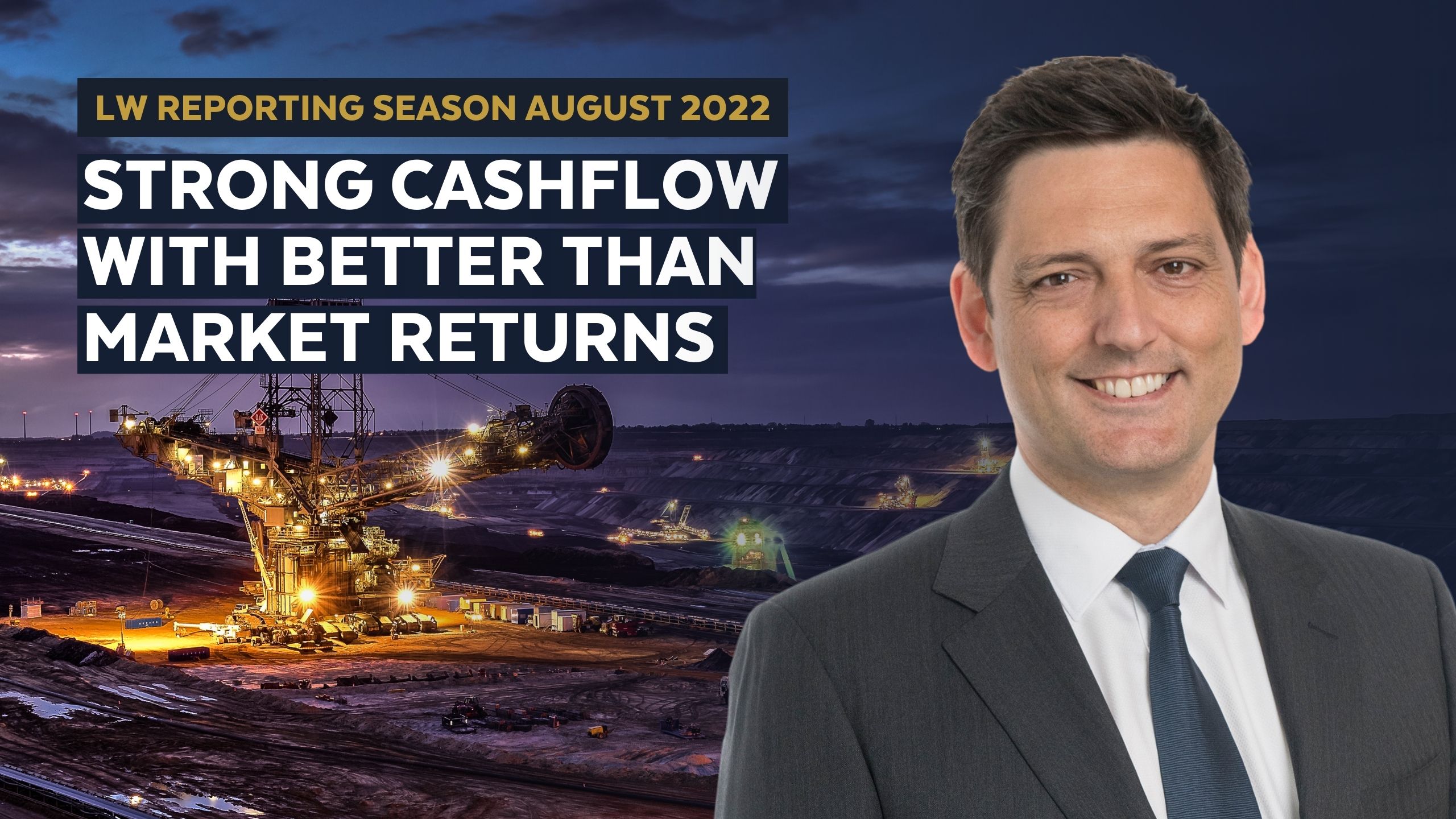This bumper $13bn dividend result defies the weaker outlook for miners
This result wasn't lost on traders, who bid up BHP Group ASX:BHP by almost 5%.
The strong financial results of the past few years enabled BHP to make last month's $8.3 billion bid for South Australian copper miner Oz Minerals ASX:OZL.
“We have lots of levers for growth and M&A is but one of those levers,” BHP chief Mike Henry told investors.
It's a good result in anyone's book, but Stefan Hansen from Tyndall Asset Management questions whether investors are taking the good news in isolation, given the lift in operating costs and slowing iron ore demand out of China.
"The market has clearly taken the dividend and outlook commentary as a sign of confidence, but given the weak macro data out of China yesterday and increased capex guidance I was somewhat surprised by the strong relative performance."
In this wire, Hansen shares some of the highlights from BHP's FY22 result, and gives us his outlook on the company and its sector for the year ahead.

BHP (ASX:BHP) key results:
- Revenue of US$65.1 billion, up 14.4%
- Underlying NPAT of US$23.8 billion, up 63.8%
- Underlying EBITDA from continuing operations up 16% to a record US$40,634 million
- Earnings per share up 25% to $4.21 US cents
- $US1.75 a share final dividend, payable on September 22
Note: This interview took place on Tuesday 16 August 2022. Tyndall AM currently holds BHP in its Australian Share Fund.
.jpg)
What were the key takeaways from this result? What surprised you the most?
Overall BHP reported a good set of results, mostly in line with or beating consensus expectations. Free cash flow was a good beat leading to a near net cash balance sheet. Operating cost guidance was lifted about 6% for WA iron ore, but this should have been expected given well-flagged cost inflation.
On Dividends, the market was fearing BHP may disappoint given recent peer results, but BHP delivered the 70% payout as forecast given the much stronger balance sheet than consensus had expected and a slightly more optimistic near-term outlook than RIO.
Another key takeaway and largest surprise was around medium term capex guidance, which at $10 billion per annum was higher than expected, but similar to RIO’s long-term guidance, much of the capex above market expectations is undefined in terms of projects and commodities, so difficult for us to attribute value.
Given the backdrop of a live M&A deal and uncertainty around fiscal stability in Chile, this guidance may well change in the near term. Importantly, it seems ongoing sustaining capital outside of decarbonisation has only seen small inflation adjustments.
In iron ore, I was surprised at the medium-term guidance of almost $3 billion per annum versus the sustaining capital guidance of $5/t, or circa $1.5bn per year. The additional spend looks directed to achieving a sustainable uplift in production from the WA iron ore assets beyond 290mtpa, but how much beyond the new medium target of 300mtpa is key to understanding the capital efficiency and ultimately the value created from the additional spend.
Regarding the OZL bid, on the conference call, BHP management stated they felt the offer was a full and fair price, above consensus valuations for OZL but factoring in the synergies BHP expects to realise. The company wasn’t drawn on whether it would increase its bid but did express disappointment in OZL for not engaging after their initial offer. I expect a higher offer may be pending, but given this is unlikely to be a competitive process, I don’t expect a substantial uplift.
What was the market’s reaction to this result? Was this an overreaction, an under-reaction or appropriate?
This was a good result and I would have expected the stock to outperform.
The market has clearly taken the dividend and outlook commentary as a sign of confidence, but given the weak macro data out of China yesterday and increased capex guidance I was somewhat surprised by the strong relative performance.
Would you buy, hold or sell BHP on the back of these results?
I would still be a holder of the stock – despite higher than expected CAPEX guidance, the level of sustaining CAPEX appears unchanged apart from small cost inflation impacts and I still expect BHP to generate strong free cash flow and deliver better than market capital returns.
What’s your outlook on BHP and its sector over FY23?
The outlook for the mining sector is rather mixed and while it is hard to identify clear bullish signals in the macro data out of major commodity consumers, it is also difficult to be outright bearish.
In China, Steel production has been declining in recent months, most recently shown to be down 6.4% YoY in July, but this has helped clear excess inventories and improve profitability of the sector, which should in turn help stabilise production through to year end and support iron ore demand.
In the important steel-consuming property sector, the data continues to be weak, with new starts down 45% YoY in July and it seems the central government's appetite for large-scale stimulus remains low, but there are support policies being provided, particularly for unfinished projects, which should see stability in the materials demand sector ahead of the upcoming national party congress later this year. Further support should be provided from infrastructure stimulus but given its less generally steel-intensive than property, it’s not a direct replacement.
Are there any risks to this company and its sector that investors should be aware of given the current market environment?
The key risks as I see it are around further deterioration of demand in China, particularly from the property sector, but I believe the central government is likely to increase support should the data continue to weaken.
Outside of China, recession is a key risk in advanced economies as central banks continue to tighten monetary policies to battle inflation.
Some of the key inflationary pressures like oil have eased somewhat, but high energy costs will remain an issue over the near term and pose a risk to economic growth.
From 1-5, where 1 is cheap and 5 is expensive, how much value are you seeing in the market right now? Are you excited or are you cautious on the market in general?
Rating: 2
But it depends where you are looking within the mining sector. In future facing commodities, like lithium, it’s difficult to find significant value but given demand still seems to be extremely strong, it seems likely these stocks will trade at premiums for a while longer yet.
For more traditional commodity exposures like iron ore, maintaining the commodity price around these levels will still yield strong cash flow to maintain better than market capital returns. The pullback in some commodities like copper has provided opportunities to deploy the capital in inorganic growth, and whether this adds value will have to be assessed on a case-by-case basis.
Catch all of our August 2022 Reporting Season coverage
The Livewire Team is working with our contributors to provide coverage of a selection of stocks this reporting season. You can access all of our reporting season content by clicking here.
More from Reporting Season
- The company that could be crowned as Australia's first Dividend Aristocrat in 2025
- FNArena reporting season monitor: February 2024 – Week Five (387 stocks covered)
- All the broker upgrades, downgrades and price targets from reporting season Feb 2024
- FNArena reporting season monitor: February 2024 – Week Four (379 stocks covered)
1 topic
2 stocks mentioned
1 fund mentioned
1 contributor mentioned

